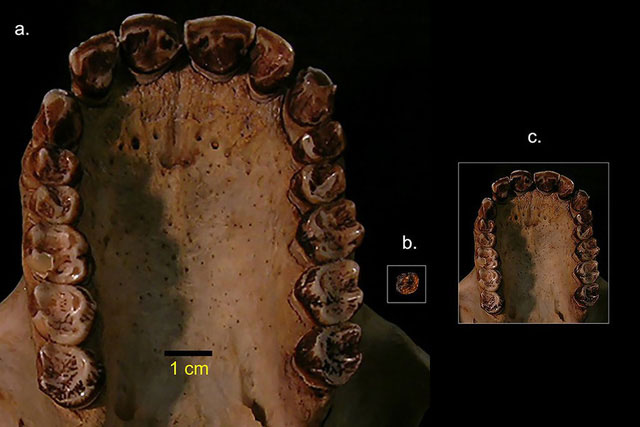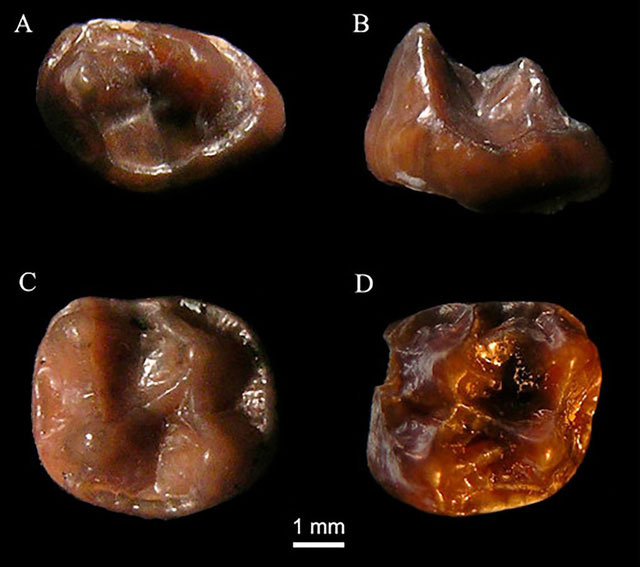Discovering the world's smallest gibbon fossils lived 12.5 million years ago
Weighing only about 3.5kg, the new gibbon fossils discovered in Tugen Hills, Kenya were identified by scientists dating back 12.5 million years ago.
Published in Human Evolution, scientists say that in the other small apes that have been discovered, this is the smallest species. This newly discovered species, named Simiolus minutus by the scientists, has three small teeth and jaws.

The jaw of the newly discovered Simiolus minutus in Kenya.
Professor James Rossie, an anthropologist from Stony Brook University in New York (USA) and Andrew Hill, an anthropology professor at Yale University, died in 2015, who discovered the clues. of this new monkey species.
Scientists also said the tiny gibbons had to compete fiercely for food when they existed. Through surgery and the study of their teeth, the scientists discovered that this species mainly eats leaves and fruits.

The teeth of the species of Simiolus minutus are found by anthropologists.
The Tugen Hills area in Kenya from the late 1960s has become a site noted by palaeontologists. And most recently discovered the new gibbon has attracted the attention of the scientific research community in the world.
Currently, all three teeth and fossils of the discovered Simiolus minutus have been brought to display at the Kenya National Museum.
- Fossil animal world's smallest footprint
- The discovery of animal fossils dating to 42 million years in Brazil
- Find the smallest fossil on the planet
- Seeing a gibbon skull fossil dating from 20 million years
- Detection of 180 million year old sea monster fossils
- Discovering fossils of 250 million-year-old sea monsters
- Detects animals they are 12 million years old with many modern facial features
- The discovery of monkey fossils in North America 21 million years ago
- Very rare fossils of gibbons
- Discovering fossil fish fossils 152 million years
- Australia found fossils tens of millions of years old
- Fossilized birds discovered 30 million years ago
 Discovered an ancient centipede fossil 99 million years old
Discovered an ancient centipede fossil 99 million years old Discovered bat-like dinosaurs in China
Discovered bat-like dinosaurs in China Discovered a 200-year-old bronze cannon of the coast
Discovered a 200-year-old bronze cannon of the coast Discover 305 million-year-old spider fossils
Discover 305 million-year-old spider fossils The most remarkable archaeological discoveries of 2024
The most remarkable archaeological discoveries of 2024  Japanese research team finds archaeological site in Peru using AI
Japanese research team finds archaeological site in Peru using AI  Many prehistoric relics were discovered at Hoang An Lake
Many prehistoric relics were discovered at Hoang An Lake  Siberia's mysterious stone walls: Relics of prehistoric civilization or natural wonders?
Siberia's mysterious stone walls: Relics of prehistoric civilization or natural wonders?  The mystery of the 40-ton bridge suddenly being stolen overnight!
The mystery of the 40-ton bridge suddenly being stolen overnight!  Decipher the 'vagina' carved into the rock at the Roman fortress
Decipher the 'vagina' carved into the rock at the Roman fortress 